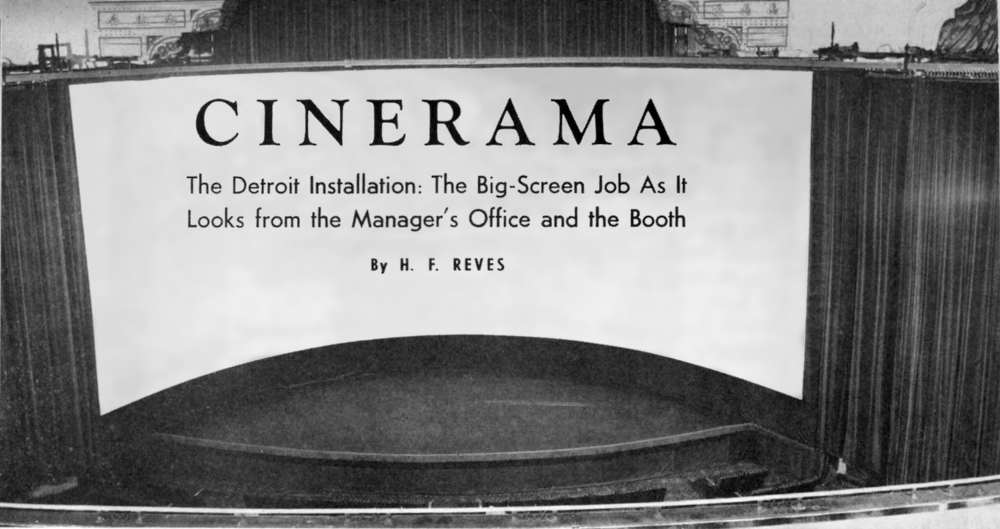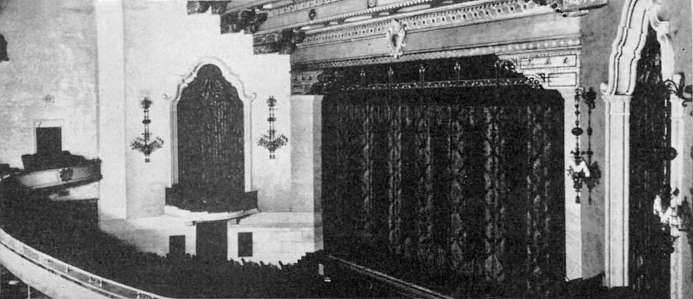|
WITH EVERYONE in the motion picture industry, as well as the general public, talking about Cinerama these days, the average exhibitor is wondering, "What would it be like in my theatre? How would it affect my regular operating policies?"
Cinerama is different from anything in the experience of the established theatre operator. Some of the changes are obvious, such as the huge curved screen on the stage and the construction of three special projection booths on the main floor of the auditorium. But what about actual operating policies and procedures?
The changes in operation brought about by Cinerama may be summarized under three significant aspects:
1. Technically, the physical presentation requires the necessary special equipment, personnel |
trained for the task, and a standard of good quality operation.
2. From the managerial point of view, the control of actual starting and running of the show on the screen is turned over to the console operator.
3. From the boxoffice standpoint, the house is working with a "hard ticket" policy, with reserved seats in place of the usual continuous operation or grind policy with unreserved seats as the basis of operation.
The technical features of Cinerama and the special equipment installations necessary to present it have been well publicized in the trade press, and it may be taken for granted that the reader is basically acquainted with the requirements. What is of direct concern to the manager and to every |
staff member concerned in theatre operation from the boxoffice to backstage is the question, "What changes will it mean in my job?"
Only three theatres in the world have had actual experience in Cinerama operation up to now--the Broadway in New York City, the Music Hall in Detroit and Warner's Hollywood in Los Angeles. To present this phase of Cinerama to the industry, the writer interviewed William Latady, vice-president of Cinerama, Inc., who is the outstanding authority in this field. Latady was in direct charge of the physical installations in both theatres, as well as those now being made elsewhere. For the first six weeks of operation, he was personally in charge of the technical aspects when Cinerama opened to the public in New York. It is from data generously supplied by him that this article is prepared, including details of operation never before released to the industry.
The presence of four projection booths appears to be the special point about Cinerama that first intrigues exhibitors. so that is a good place to start. Those three special booths on the main floor are for the picture only--the sound comes from the regular projection booth in the usual elevated position.
Each of the three picture booths contain a special Cinerama projector: a control rack for starting and stopping the projector, and for placing it under remote control (that is, so that it can be controlled
The MODERN THEATRE SECTION
|


